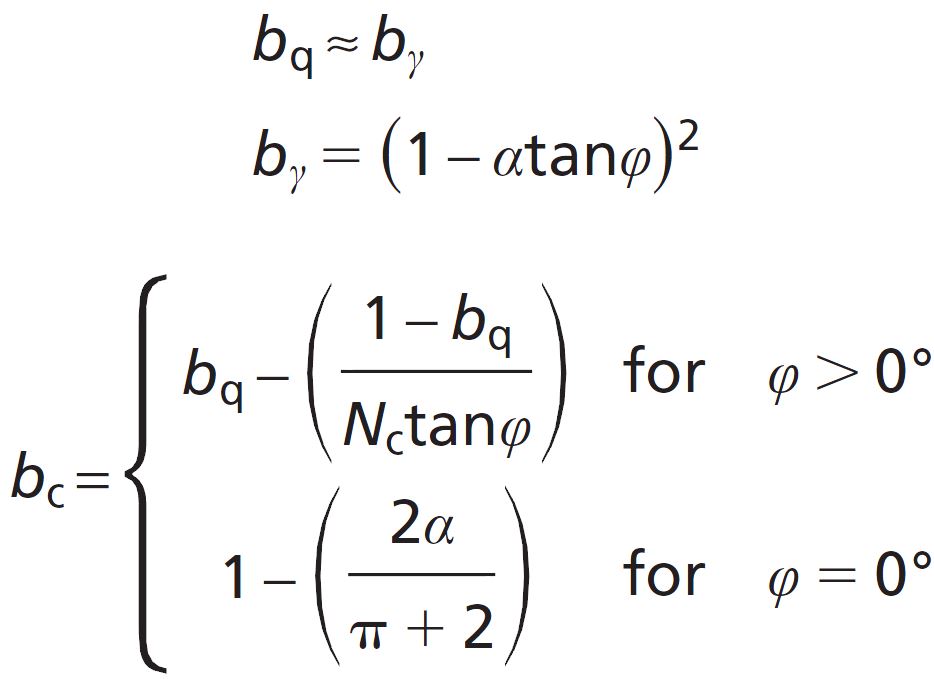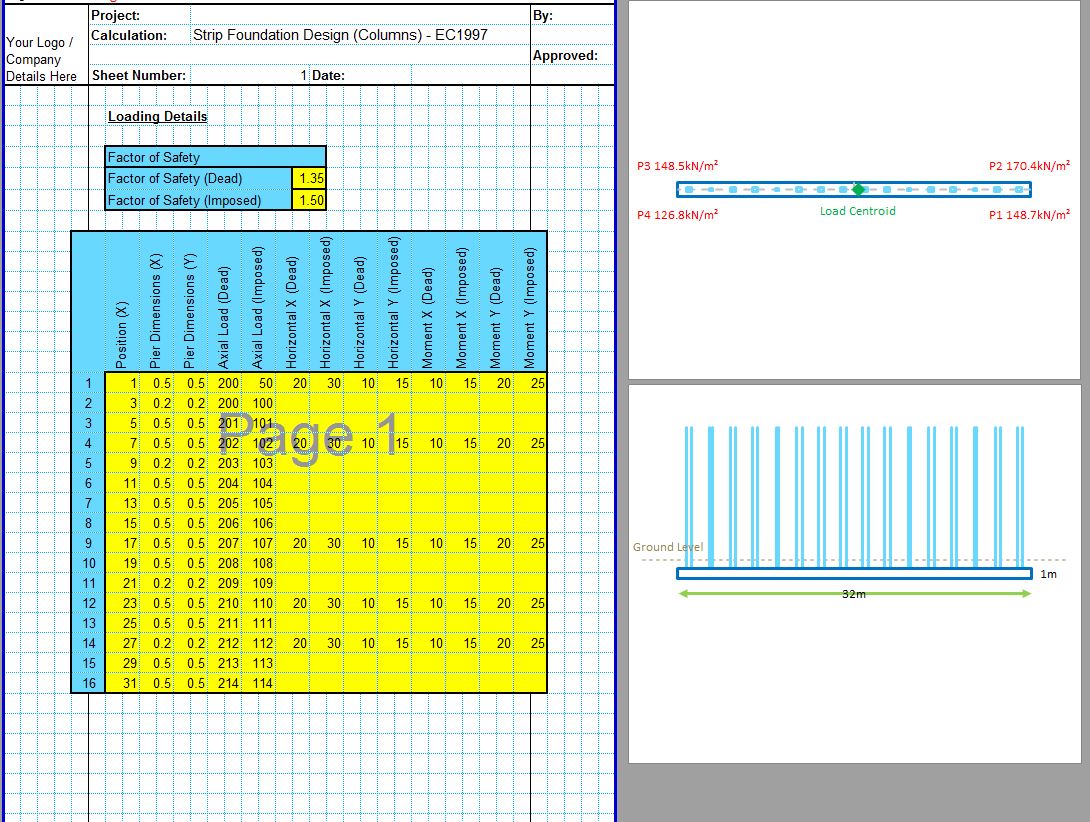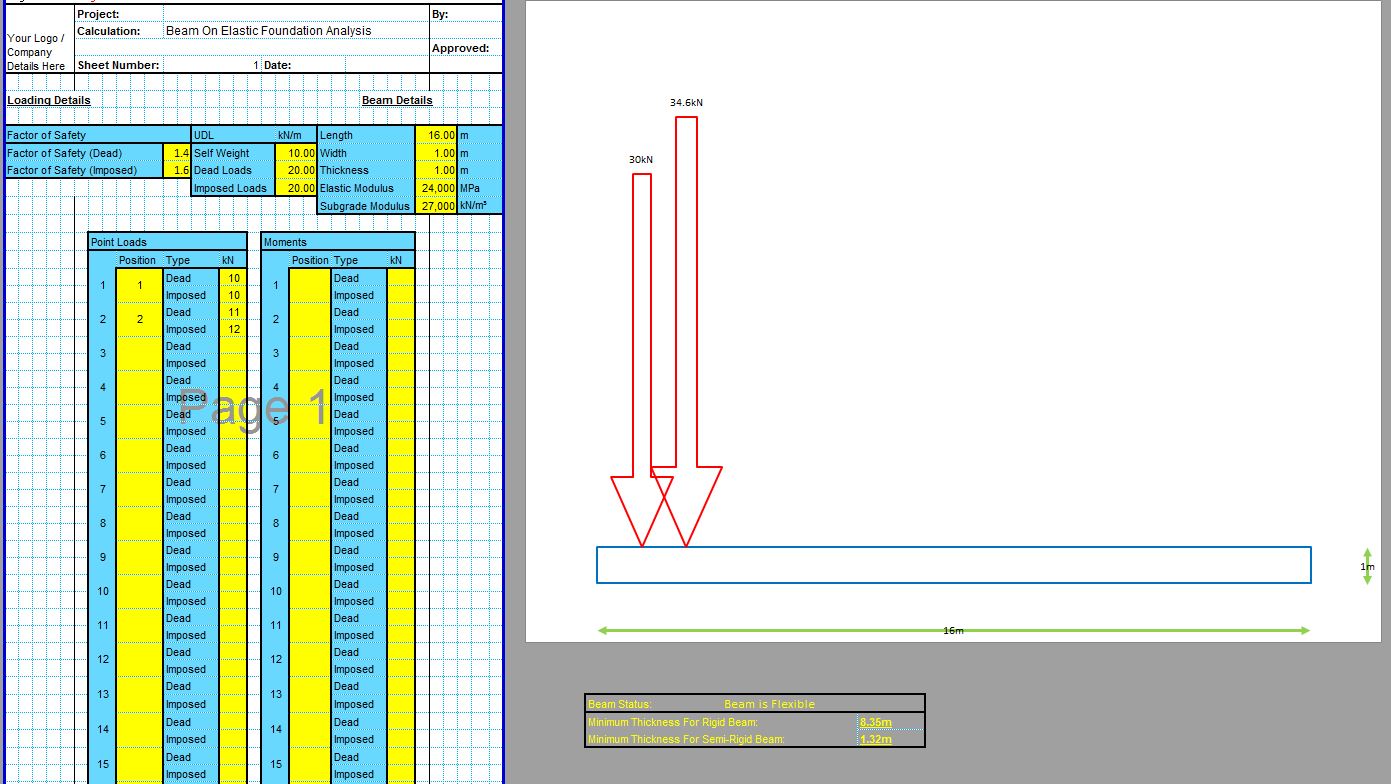The BS 8004 bearing capacity method is detailed in BS 8004. The standard does not state that this method has to be used, the Hansen or Vesic methods are very closely related to the BS 8004 method. However because the method is stated in the standard, the BS 8004 method has become very popular in the UK.
The BS 8004 Bearing Capacity method is included in the CivilWeb Soil Bearing Capacity Calculation Excel Suite which includes a total of 6 different analytical methods of determining the bearing capacity of soils. Each of these methods is potentially acceptable for use with BS 8004 so long as the site conditions are suitable. The CivilWeb Soil Bearing Capacity Calculation Excel Suite can be purchased at the bottom of this page for just £20.
Alternatively the Bearing Capacity Suite is also included in the full Foundation Design Suite which includes all 12 of our foundation design spreadsheets for only £50. This can also be purchased at the bottom of this page.
BS 8004 Bearing Capacity Method
The British Standard for foundation design BS 8004 includes an extension of the bearing capacity analysis found in Eurocode EN 1997-1. This method is very similar to the Eurocode method but includes modification factors for depth, slope inclination and rigidity.
The BS 8004 method breaks the bearing capacity problem up into different equations for coarse granular soils such as sands and gravels and fine soils such as clays and silts. Some of the modification equations are different depending on the soil type. This is effectively the same as the Eurocode method breaking the problem into drained and undrained conditions.
BS 8004 Bearing Capacity Equations – Coarse Soils
BS 8004 includes the following bearing capacity equations;
The bearing capacity coefficients are the same as in the Eurocode except for the Nγ value. BS 8004 takes an equation from Poulos which is typically more conservative than other equations for Nγ.
BS 8004 Modification Factors – Coarse Soils
The following modification factors are included where;
Φ is the angle of shearing resistance of the soil
a is a factor accounting for the roughness of the base. This is typically taken as 0.1054 for a rough foundation, and 0.0663 for a smooth foundation. In general most concrete foundations will be rough, only precast units or other materials can be considered as smooth.
b is another factor accounting for the roughness of the foundation base. This is typically taken as 9.6 for a rough foundation or 9.3 for a smooth foundation.
B is the width of the foundation
L is the foundation length
D is the depth from the ground surface to the base of the foundation
A’ is the effective foundation area, this may be affected by any loading eccentricities
H is the horizontal load
V is the vertical load
m is a geometric factor which can be calculated using the equations on below;
α is the inclination or tilt of the foundation base
ω is the inclination of the slope
Ir is a soil property value calculated using the below equation;
G is the soils shear modulus of elasticity
c' is the soils effective cohesion
σ’v is the vertical effective stress on the foundation
Shape Factors
Load Inclination Factors
Base Inclination Factors
Slope or Ground Inclination Factors
Depth Factors
Rigidity Factors
BS 8004 Bearing Capacity Equations – Fine Soils
BS 8004 includes the following equations for estimating the bearing capacity of fine soils such as clays and silts where A’, B, L and D as as defined above, cu is the undrained shear strength of the soil, and qvb is the total overburden pressure at the base of the foundation.
Conclusions
The BS 8004-2015 method follows the recommendations of the Eurocode method fairly closely while trying to expand it to include more design situations. The Eurocode method is quite conservative in that it does not give any guidance on analyzing bearing capacities for foundations with ground inclinations and does not include depth factors or rigidity factors.
The Eurocode does not include these factors because there is some debate as to their use in all applications but the BS 8004 method is useful to the designer in most cases where these effects are present. It is recommended that the results of the BS 8004 method are checked against equivalent results using the Eurocode method.
CivilWeb Soil Bearing Capacity Calculation Excel Suite
The CivilWeb Soil Bearing Capacity Calculation Excel Suite includes the BS 8004 Bearing Capacity calculation method for both fine grained and coarse grained soils. The spreadsheet suite also includes unique comparison tools which complete the calculations for all 6 methods and present them in a graph for the designer to compare. This allows the designer to complete a full bearing capacity analysis in minutes.
Buy the CivilWeb Soil Bearing Capacity Calculation Excel Suite now for only £20.
Purchase the our Soil Bearing Capacity and Settlement Calculation Bundle for only £25.
Or buy our best value bundle, the full Foundation Design Suite including all 12 of our foundation design spreadsheets at a discount of 80%.
Download Free Trial Version
To try out a fully functional free trail version of this software, please enter your email address below to sign up to our newsletter.
Other Foundation Design Spreadsheets;
Foundation Design Spreadsheet Suite
Our full Foundation Design Suite includes all 12 of our foundation design spreadsheets for only £50 (80% discount).























